Work Package 4: Consumer Understandings of Risk, Anxiety and Trust
WP 4a: Making Date Labels Work
This workpackage will investigate UK consumer anxieties around expiry labelling of food - such as `use-by´, `sell-by´ and `best-before´ dates. It will examine consumers' understandings of expiry labelling, the standardisation of labelling and how consumer anxieties (or lack of) about food labelling are represented within policy, media and public discourses around food.The date labelling of food serves a number of roles. It enables consumers to discern the freshness and safety of packaged foodstuffs, and facilitates the communication of information about food safety and quality by regulators, manufacturers and retailers.
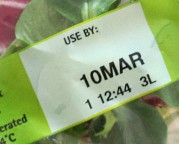
However, concern has recently emerged that labels are not performing their intended function. Consumers are thought to be placing themselves at risk of microbiological food poisoning (Hutton 2009) or are wasting edible food (WRAP 2008). Manufacturers may be misapplying `use-by´ labelling to products that pose little or no microbiological risk or are overly conservative in determining the end of shelf-life (Hough 2010). For their part, regulators may be providing insufficient or unclear advice on how distinctions between different labels should be made, and may need to reconsider the form and role of labelling.
Workpackage 4a of the CONANX project explores how date labels are made to work at each stage of food production and consumption. The questions the project seeks to answer are:
1. What kinds of risks are managed through date labelling and by whom?
2. How are the roles and responsibilities of consumers in managing food risk performed in policy, by manufacturers, in the media or by consumers?
3. What is the role of date labelling in consumer understandings of food safety?
4. How do date labels function as a technology? How does the calculation and effectiveness of food safety labelling incorporate and require particular models of consumer behaviour?
The first stage of the research will focus on consumer understandings of date labelling. Focus groups will be undertaken with consumers in Sheffield and Norfolk. The groups will be stratified by life stage and socio-demographic status. The second strand of the study will consist of a series of semi-structured interviews with policy makers, manufacturers, retailers and food safety scientists.
The output of the project will include academic publications, a report to participants in the research and a summary of key findings for policy makers.
WP 4b: Fish Consumption - A Contested Domain
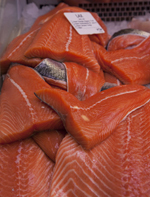
Background:
In the discourse on fish consumption in Sweden anxieties at a variety of scales intersect: from global concerns of sustainable fishing to everyday worries about how to make your children eat the recommended 2-3 servings of fish a week although they rather prefer meatballs and pasta.
The standpoint of the Swedish National Food Administration (NFA) is clear: Fish is healthy for you and Swedes should eat more fish than they do. NFA has however been forced to work hard to maintain this recommendation in the discursive landscape of ever increasing risks of fish consumption. The officials of NFA are involved in continuous risk/benefit calculations, and are faced with immense problems with communicating the advice to consumers in a reliable manner.
The first food alert regarding fish in Sweden dates back to the 1970s´ and dealt with pollutants, like mercury and dioxins, resulting in the NFA report comprising all existing research on health hazards of fish consumption. The conclusion was that the benefits outweigh the risks; but also, in a somewhat bewildering way, warning consumers that there are some species you should refrain from eating and certain consumers groups should not eat fish at all. The last decade the `riskscape´ has shifted towards issues of sustainability, such as overfishing, harmful fishing practices and long CO 2 emitting transports. NFA responded with a new report claiming that eating fish is sustainable, but of course there are certain fish you should not eat, and that you should also differentiate your fish-eating, putting more pressure on consumers. The latest alert concerns climate change and the harmful effects of rising temperatures of the oceans for coastal fishing. Scientific reports raise serious warnings towards putting trust in GMO fish, able to cope with higher temperatures, as the answer.
Pregnant women are considered a risk group in regard to fish consumption, and are given special advice by the NFA. Some kinds may contain raised levels of mercury, dioxins or PCB, NFA warns and should be eaten maximum 2-3 times a year. From the advice we learn that mercury is stored in the body for a few months and Dioxin and PCBs for several years and transferred to the baby through the placenta and breast milk, which may affect child development. The list of fish to avoid contains fifteen different kinds of fish, such as perch, pike (because of mercury) and Baltic herring, salmon and salmon trout from the Baltic (because of dioxins ). NFA also produces a list of 25 kinds of fish that is safe to eat during pregnancy including all farmed fish. NFA also informs pregnant women of the risk of being infected by listeria and toxoplasma by gravad and smoked fish and sushi, and the advice is to only eat newly made or newly packaged products. Fish will out-compete natural fish stocks if it gets established outside of separate reservoirs, the scientists argue. Once again NFA is faced with new challenges of maintaining the discursive connection between fish and health.
Research Questions:
Overarching research questions concern how anxiety, risk, risk group and prevention is conceptualized and handled by officials at the NFA and by pregnant women.
Methods and Material:
The research will consist of two studies:
1. A study of the strategies used by NFA during the past thirty years to balance and manage risk scenarios on fish consumption and stick to the basic standpoint that fish is healthy for you. The main focus will be the past 5-10 years. NFA reports and advice will be scrutinized and interviews with officials at NFA responsible for risk communication and dietary advice on fish will be made. The material will be analyzed by the use of theories on risk calculation, risk management, governance, normalization and dietetics
2. Fieldwork at maternity care centers to study risk communication about fish and pregnancy. Observations at information events, studies of information leaflets etc, interviews with staff, brief interviews (talks) with participating women (eventually focus groups) will be made. The objective is not primarily to study the way staff and women handle the advice communicated by the NFA, although this also will be included, but to discuss and analyze anxieties for fish and pregnancy in relation to aspects of body, gender, reproduction and motherhood.
WP 4c: Stimulants of Everyday Practices
Background
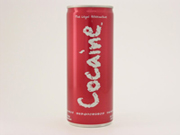 Cocaine Energy Drink in its original design
Cocaine Energy Drink in its original designIn the fall 2009, AO Blommor AB, a small company specializing in selling flowers decided to expand their acitivities to also importing and introducing an energy drink to the Swedish market. The drink´s name was Cocaine, the logo written in what seemed to be white powder on a bright red background on the can, also sporting the slogan "The legal alternative". The caffeine content of the drink was almost 350% of the market leading drink Red Bull, making it the strongest energy drink by far. After a short but tempered debate in the media, all the big store chains made the decision not to sell the drink at all. Slightly afterwards, a decision from the Board of Environment in the municipality from where AO Blommor AB were active, forbade the company to sell the drink until a sign, warning the user about the high caffeine content, was also printed on the can.
The discussions given rise to by the prospected introduction largely had followed two lines of argument; a health related one, arguing that the amount of caffeine really was not in proportion to the amount of liquid, and a moral one, arguing that the name was highly dubious. By the time of the decision from the Board of Environment, the moral argument was absent from the rhetoric. The market conglomerates, however, stuck with the moral argument; the name was, according to several representatives of the companies, highly inappropriate and definitely played an active role in the decision to block the product.
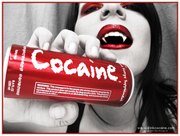 Cocaine Energy Drink promotion shot from spring 2009, after the heated debate on the slogan “The legal alternative”.
Cocaine Energy Drink promotion shot from spring 2009, after the heated debate on the slogan “The legal alternative”. Stimulant Anxieties
Stimulants, i.e. consumables containing bioactive material such as psychotopes, are in most societies considered a special class of foodstuff. Most often, they are confined within historically emerged patterns of practices, formally or informally regulating the supply of bioactive stimulation to the society´s individuals; they are to be consumed in a social context (tea, coffee), they are excluded from consumption in certain spaces or from certain age groups (tobacco) or they are sold under recipe (pharmaceuticals) or they are just not considered strong enough to be harmful (cocoa). As stimulants have a long history in western societies, the history of the emergences of these patterns is equally long. But when a new stimulant – not included in existing patterns or available classes – enters the market, some anxieties arise; there might not be any readily established practices in which it could be safely inserted and controlled.
The story of Cocaine is a story of one such anxiety, and it is also an example of the new class to which it belongs; the energy drinks, soft drinks containing a defendable amount of sugar and caffeine, and which primarily targets youth. In the discussions surrounding the energy drinks, moral and health related arguments are equally prevalent, and actors on different levels – market level, official level, practice level – all seems to use the arguments closest at hand to establish some kind of consensus on where these foodstuffs fits in. Health aspects and moral aspects are intertwined in new ways in these discussions, and exactly how they come to combine relates to the discursive and material properties of the practices in which they turn up.
The Undertaking of the Project
This project aims at determining the scape of the energy drinks in contemporary Sweden. Questions initially guiding the research will be:
- In what existing patterns of practices does the energy drinks fit in? With which practices does it combine, and with which does it clash?
- What new practices are yielded from the combinations?
- What anxieties are triggered from the newly emerged energy drink/stimulant practices?
In order to determine these scapes, three areas will be examined.
1) A socio/historical account of the emergence of existing stimulant practices in Sweden. This will be done primarily from literary sources, and aims to create a historical map of the practices relating stimulants to users, creating the affect of stimulation. Apart from the discussions of what should be considered drugs and what should be considered food, the Swedish coffee culture with its associated practice fika will also be examined, but also newer practices such as the sport drinks of the athletes or the role of Jolt Cola with the IT companies of the 1990´s.
The literary studies are going since March 2010, and will be ongoing until the end of the year.
2) A discursive examination of the discussions of these practices and the spaces to which they are or should be confined. Here, contemporary media material and official documents will be analyzed. Apart from sources of more official nature, Internet material is important, such as discussions by users on web forums, websites and blogs.
This examination of written material is an ongoing process, but will not continue for longer than the end of the year 2010.
3) An ethnographic investigation containing interviews and ethnographic fieldwork in order to distinguish and analyze the practices surrounding the consumption of energy drinks. As there are no official spaces designated to activities including energy drink consumption, the first interviews will be undertaken with categories handling the energy drinks in different contexts. These might be such as: shop keepers, officials, company representatives, teachers (and other staff working with youth), and, eventually, users – students, gamers, athletes, whatever categories that comes out as a relevant one from the interviews. Informants will also be recruited from the Internet forums. Hopefully, they might lead to more concrete practices to be studied in place.
Informants are recruited continually, and interviews are planned to be be conducted in June, August and September. Hopefully, practice-oriented fieldwork can be conducted in October, November, and December.
All these areas will be examined through the research questions, and in all of them the concept of affect will be operative. This concept functions on both what might be called a `discursive´ level and what might be called an `ethnographic´ level, and points to the connectibility of the drinks and the users respectively; how are energy drinks related to energy drink drinkers? What draws them together or keeps them apart?
On the discursive level, what is studied is the teleo-affectivity of documents and stimulants respectively; how one affects and is affected from a distance. How is anxiety and/or desire modulated?
On the ethnographic level, affect concern the cans themselves, the drinks and their properties respectively and the conditions of the practices where drinks and users come together. The affect operating on this level is expectedly one of desire, more than one of anxiety.
The research phase is planned to continue at least for the rest of 2010, which should also leave some room for developing unexpected routes, should they come along. Apart from a mapping of the scape of stimulants in contemporary Sweden and a more detailed account of the practices of energy drinks, the project should hopefully also result in a somehow creative discussion of bringing together the concepts of practice and affect within the field of food studies.
WP 4d: Ham of Horror - The Makings of Risk and Anxiety in a Swedish Food Scare
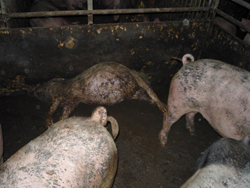
In late November 2009 an animal rights organisation called Djurrättsalliansen (Animal rights alliance) published a report uncovering a number of severe cases of animal neglect at Swedish pig farms. Members of the organization had illegally entered pig farms documenting, through film footage, atrocious living conditions. Soon the footage dominated Swedish media and provoked a public outrage as well as an intense debate on Swedish meat industry and meat consumption. The moral and economic dispositions of different actors, e.g. activists, industry, government and consumers, were brought to fore. The debates that followed the disclosure revealed much insecurity regarding what would happen when the less appealing aspects of meat production become visible to consumers making the production and consumption of meat fold together. Although the scandal, later labelled the "pig scandal", was instigated by images of pigs and their living conditions, "the consumer" was made into its main character and anxiety its main scheme.
In this project the "pig scandal" will be used to investigate how issues of anxiety and risk related to meat consumption is constructed and managed by different actors in Sweden today. The research is guided by the following main questions:
- How is risk and anxiety made and managed by different stakeholders?
- What material, conventional and temporal settings do different ways of making and managing risk and anxiety rely on?
The first part of the project focus on the discursive or narrative making of risk and anxiety and investigate how issues of risk, anxiety and trust was constructed and negotiated in media debates following the "pig scandal". While meat producers and authorities, as well as activist seemed to agree that consumer food practices and perceptions of risk were instrumental to the workings of the meat industry, the debate revealed fundamental disagreement regarding what was at risk and what was to be considered a risk. Activists brought attention to risks of maltreatment of animals and trickery of commercial meat producers and promoted a vegetarian lifestyle as a way of managing these risks. Authorities called attention to public health risk and risk of loosing consumers´ trust and called for strict controls and legislations. While representatives of the meat industry described activists, vegetarian food practices as well as stricter controls and legislations as potential risks to the already competitive meat business and to an "ordinary way of life". Through an analysis of media articles and web-based material I investigate how risk is constructed, where different actors locate risk, and how it is managed.
The second part of the project focus on the material and corporeal aspects of risk and anxiety and will investigate how issues of anxiety and risk is constructed and managed in different practices operating "behind" the media debates of the "pig scandal". Through interviews and fieldwork I trace the developments of the "pig scandal" from its instigators Djurrättsalliansen to other actors such as consumers to make visible some of the material, conventional and temporal setups surrounding the scandal. For example, the disclosure made by Djurrättsalliansen and the anxieties it triggered relied heavily on digital cameras, editing tools, web pages; on ideas on animal welfare, and on its timely launch one month before Christmas when a majority of the Swedes enjoy their Christmas ham. Correspondingly the anxieties of consumers relied on for example TV, Internet and print media, on ideas and conventions on animals as well as activists, and on ham being a recurring part of everyday meal as well as Christmas dinner. By making visible different material, conventional and temporal setups surrounding the pig scandal I map out the practices and landscapes in which anxiety evolve, operate and fade away.